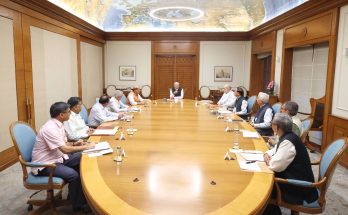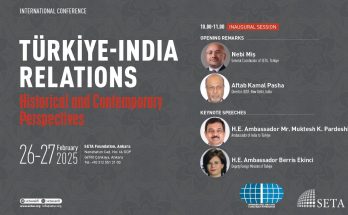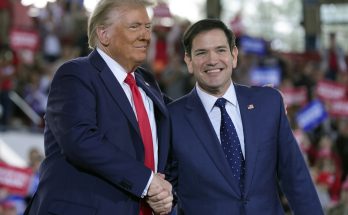
Bound by cultural ties and common interests, India and Vietnam are set to celebrate the 50th anniversary of the establishment of their diplomatic relations in 2022 as the two strategic partners intensify their cooperation to combat the scourge of the Covid-19 pandemic. Like a true friend and partner, India has been quick to provide anti-Covid relief to Vietnam.
A slew of high-profile visits and events are planned for the golden jubilee celebrations. Vietnam’s Prime Minister Phạm Minh Chính is expected to visit India early next year to scale up comprehensive strategic partnership to new heights.
Currently, the focus is, however, on curbing the spread of the pandemic, with Hanoi looking for greater assistance from India by way of supply of vaccines as it controls the deadly wave of corona cases that erupted around September.
Hanoi fights backs
Vietnam, the rising economic star of Southeast Asia, has pulled out all stops to curb the pandemic. Vietnam has spent more than VND30 trillion ($1.32 billion) from the state budget on fighting the novel coronavirus, according to media reports. Around 300,000 personnel from medical, military and police forces have been dispatched throughout the country. Of these, 20,000 were health workers, 133,000 were military personnel and 126,000 were with the police force.
Ensuring food security of the people affected by Covid protocols is a major priority of the Vietnam government. 137,000 tons of rice from the national reserve has been distributed to 31 localities to ensure food security during the pandemic. Several businesses and organizations, both inside and outside of Vietnam, and foreign governments have also provided thousands of ventilators, masks, test kits and other tools and equipment for the coronavirus fight.
Vietnam’s Ministry of Health has confirmed 853,842 cases of COVID-19, as of October 15, 2021. However, 788,005 of the affected patients have recovered and have been discharged from hospitals. Vietnam has also recorded 20,950 deaths due to the pandemic. The latest community transmission cases have been reported from Ho Chi Minh City, Dong Nai, Binh Duong, Tay Ninh, and An Giang among others.
According to the Ministry of Health, as of October 12, the whole country has injected 55,870,164 doses of COVID-19 vaccine, the rate of injection of at least 1 dose of vaccine is 55.0% and the rate of injecting 2 full doses is 22.7% population 18 years and older.
The good news is steady reduction in number of corona cases in the last few weeks. Due to multi-pronged efforts by the Vietnam government, the number of new cases has reduced to less than 4000 cases/day compared to its peak 15000 in early September. The government’s multifarious measures and initiatives to control the Covid-19 pandemic can be encapsulated as follows.
- Vaccine diplomacy campaign: Recognizing the importance of vaccines in preventing disease momentum and mortality, the Vietnamese government has issued and effectively implemented a vaccine diplomacy campaign to get as many vaccines as possible as soon as possible with the motto that the best vaccine is the one that is injected as soon as possible. In all talks, conferences and high-level contacts, Vietnam’s senior leaders have requested countries to support the supply of vaccines, Covid treatment drugs, and vaccine loans.
- All Covid-19 vaccines given to the Vietnamese people are free of charge. The government has prioritized vaccination for vulnerable target groups, including (i) People living in epidemic areas; (ii) The poor, social policy beneficiaries; (iii) Subjects are employees, employees’ relatives working in enterprises (including enterprises in industrial parks, export processing zones, transport, credit and tourism businesses), essential service businesses such as accommodation, catering, banking, health care, pharmacy, medical supplies, retail, wholesale, market, construction sites , people in the area, tourist area; and other target groups. Accordingly, all residents of the two largest cities, Hanoi and Ho Chi Minh City, have received at least one injection before September 15, 2021.
- In an innovative step, the Vietnamese government decided to make communes and wards a fortress against the epidemic, and the people were the centre and subject of the fight against the epidemic. This strategy was underpinned by the assumption that communes and wards are the places closest to the people, understand the people the most and know the situation of the people closest and most specifically. At the same time, the government has strengthened mobile medical stations and increased the number of health workers to communes and wards.
(IV) The government has set up a phone helpline to ensure food for the people with safety bags.
To bring the Covid-19 under control, the Vietnam government has followed the centralized management model which has proved to be very effective and result-oriented.
Friend in Need

India, a trusted friend and partner, has taken note of exemplary efforts made by the Vietnamese government to mitigate the pandemic and has also been prompt in sending oxygen and oxygen concentrators to help the Vietnamese people. Vietnam’s Ambassador to India Pham Sanh Chau has expressed gratitude to India for delivering COVID-19 relief amid a raging fourth wave of the pandemic in the country. “We are grateful that the Indian government delivered oxygen and oxygen concentrators just in time to save thousands of lives. It was delivered by an Indian Navy ship. We will never forget this. A friend in need is a friend indeed,” he said.
Vietnamese Foreign Minister Bui Thanh Son has also thanked India for sending 300 oxygen concentrators and 100 MT of liquid medical oxygen. India’s External Affairs Minister Dr S. Jaishankar has expressed his optimism that the India-Vietnam partnership will continue to grow “from strength to strength”
Prime Minister Narendra Modi has aptly described Vietnam as “an important pillar of India’s Act East policy and an important ally of Indo-Pacific vision,” thereby encapsulating rapid transformation in India-Vietnam ties since the two sides elevated their relations to the level of Comprehensive Strategic Partnership in 2016.
The two sides are working towards forging reliable, efficient and resilient supply chains and are scaling up efforts to achieve the target of US$15 billion of bilateral trade.
The Road Ahead
This enhanced bilateral cooperation comes at a time when India’s economy is on an upswing after battling the worst of the pandemic and Vietnam is easing curbs and lifting social distancing curbs, setting the state for resumption of economic activity. While challenges remain including labor shortages and supply chain disruption, Vietnam’s economy remains resilient helped by strong market fundamentals, said a research report.
On October 1, authorities in Ho Chi Minh City, the commercial hub of the country, eased curbs and lifted social distancing measures allowing several business activities including, offices, industrial parks, and factories to resume. his was the first time after 90 plus days.
Vietnam’s reopening after days of the devastating fourth wave of the pandemic underscores a paradigm shift in the Vietnam government’s strategy from a ‘zero-covid’ approach to ‘living with the virus safely’ rather than a ‘zero-covid’ approach. Hanoi set an exemplary record in containing the pandemic in 2020, but the Delta variant in the fourth wave proved to be devastating. In a sign of resilience, Vietnam is, however, bouncing back rapidly to script its recovery, health and economic. In this journey, India, a time-tested strategic partner, will be a friend in need as well as deed to jointly tackle new challenges and create new win-win opportunities.
Author Profile

- Manish Chand is Founder-CEO and Editor-in-Chief of India Writes Network (www.indiawrites.org) and India and World, a pioneering magazine focused on international affairs. He is CEO/Director of TGII Media Private Limited, an India-based media, publishing, research and consultancy company.
Latest entries
 India and the WorldJune 16, 2025Amid Pakistan-Turkey nexus, Cyprus joins India against cross-border terror
India and the WorldJune 16, 2025Amid Pakistan-Turkey nexus, Cyprus joins India against cross-border terror India and the WorldMay 8, 2025Pahalgam payback: India exposes Pakistan’s lies, misuse of religious sites for training terrorists
India and the WorldMay 8, 2025Pahalgam payback: India exposes Pakistan’s lies, misuse of religious sites for training terrorists India and the WorldMay 3, 2025IMEEC provides a democratic alternative to BRI: Italy’s former foreign minister (Interview)
India and the WorldMay 3, 2025IMEEC provides a democratic alternative to BRI: Italy’s former foreign minister (Interview) India and the WorldApril 21, 20253T Template for India-US Mega Partnership
India and the WorldApril 21, 20253T Template for India-US Mega Partnership







